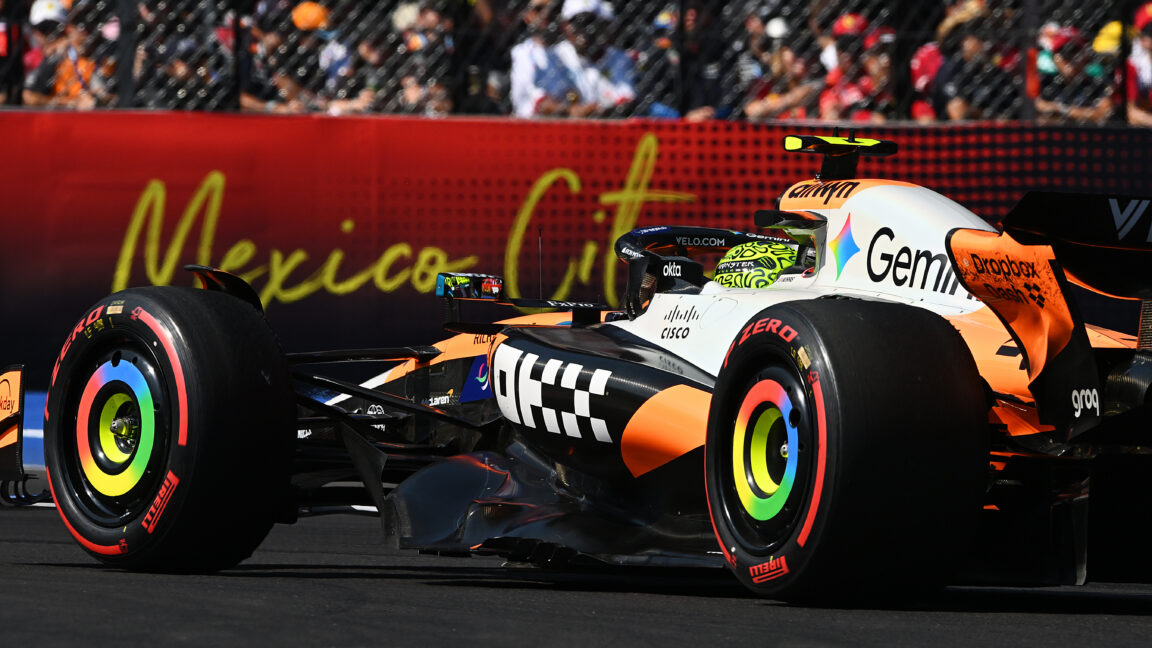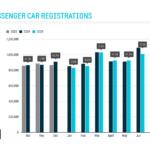It was a quiet race for the win, but there was plenty of action for second and third.
Mexico City is one of the more unusual places that Formula 1 races, and it’s all thanks to altitude. The city sits at than 7,350 feet (2,240 m) above sea level, which makes the air noticeably thin compared to the average Grand Prix held at sea level. Like humans, F1 cars need air.
Oxygen is necessary if you want any internal combustion to happen inside the turbocharged 1.6 L V6 engine. A good flow of air across the various radiators and heat exchangers in the car is vital if you want to make it to the end of the race. And the downforce-generating wings and underbody only generate downforce by creating differences in air pressure above and below the car.
At over a mile above sea level, there’s about 20 percent less air, and therefore less power created by combustion, less efficient cooling of the cars, and less downforce able to be generated.
That’s why, despite a very long straight that sees F1 cars reach some of their highest speeds all year—well over 210 mph (337 km/h)—the cars feature Monaco-spec wings that generate as much downforce as possible. Mexico City-spec adds lots of new vents and louvres to the cars’ bodywork as well as the high downforce elements, and even so, engine problems are a little more common here than elsewhere due to thermal management.
The Autodromo Hermanos Rodriguez circuit stands out in another way, too: It’s the only one with a baseball stadium dropped in the middle of it. The stadium is no longer used for the bat-and-ball sport, but it fills up for F1 with up to 40,000 fans, even if they don’t have the most exciting array of corners to watch.
It’s been 13 years since the last time F1 saw a change in the championship lead so late in the season, but that’s just what happened this weekend. McLaren’s Lando Norris had the measure of everyone in qualifying to secure pole position. And even with the 2,723-foot (830-m) run to turn 1, which positively encourages slipstreaming, he was well in the lead at the start and remained there for 71 laps, finishing just over half a minute ahead of everyone else.
Doing so vaulted him past his teammate Oscar Piastri to regain the lead Norris held in the early part of the season, albeit by just a single point. But if that makes it sound like it was a boring race, think again.
Behind Norris, the chasing pack went into turn 1 four-wide. Both Ferraris were in the mix: Charles Leclerc qualified second, and his teammate Lewis Hamilton was third. Max Verstappen could qualify his Red Bull no higher than fifth, behind George Russell’s Mercedes. A number of drivers had to take to the grass at turn 1 to avoid crashing, giving Norris plenty of breathing room to build a lead.
Behind him, things were a little more interesting. Leclerc managed to keep second place, but with much less speed than Norris, a following pack formed behind him. By lap 7, Verstappen had managed to fight his way past Russell, then diced with Hamilton, his old foe from the 2021 title. Neither car was able to keep entirely to the track, and Hamilton was handed a 10-second penalty, putting an end to any thoughts of finally grabbing his first Ferrari podium finish. Eventually, he finished eighth.
Norris, Leclerc, and Verstappen all stuck to a one-stop strategy, with the Red Bull driver starting on medium tires and then swapping to the softs; his rivals did the opposite. Verstappen was in a much stronger position in the final phase of the race, with newer, softer rubber than the Ferrari ahead. But although he closed the gap to fractions of a second, he was denied a chance to overtake Leclerc when a virtual safety car interrupted the race with just three laps to go.
With his third place, Verstappen is now 36 points behind championship leader Norris, with a total of 116 points left on offer for the season.
Fourth went to the Haas of Oliver Bearman, who saw a chance early on to get into the front-running pack but was unable to hold off Verstappen for the final podium spot toward the end of the race. As for Piastri, he was able to claw his way back to fifth after starting eighth. That earned him 10 points, so he only gave away five to Verstappen, although Norris now leads him by 357 points to 356.
The next race will be in Brazil on November 9.
Ars Technica has been separating the signal from the noise for over 25 years. With our unique combination of technical savvy and wide-ranging interest in the technological arts and sciences, Ars is the trusted source in a sea of information. After all, you don’t need to know everything, only what’s important.












